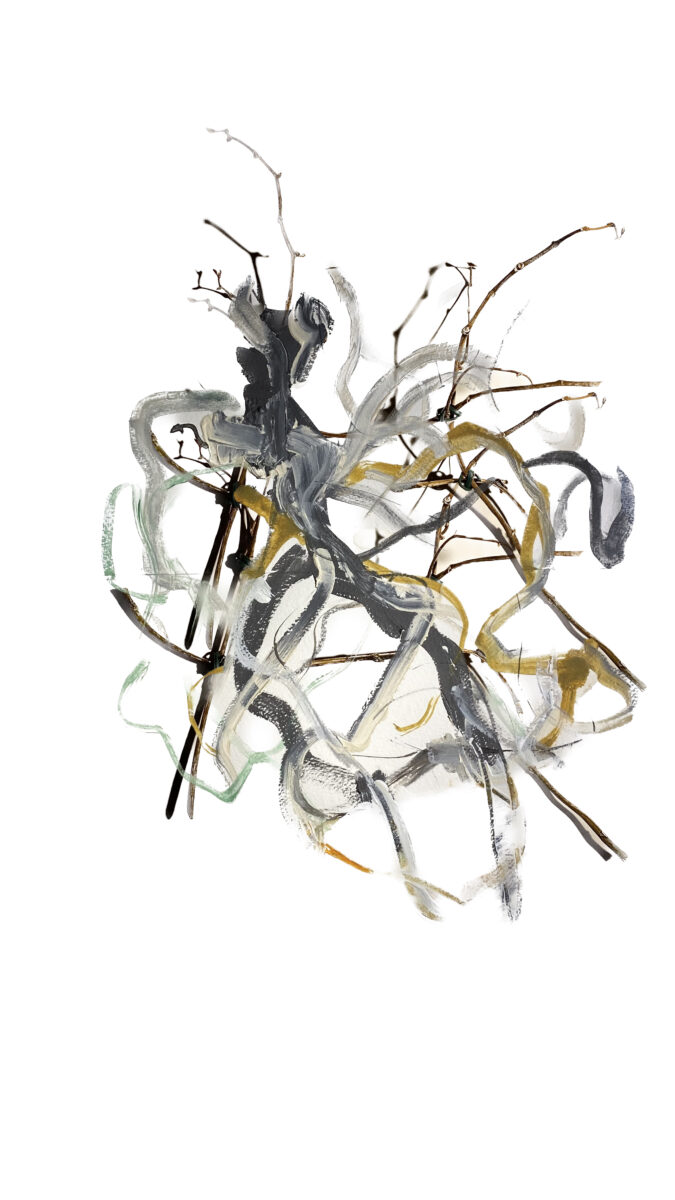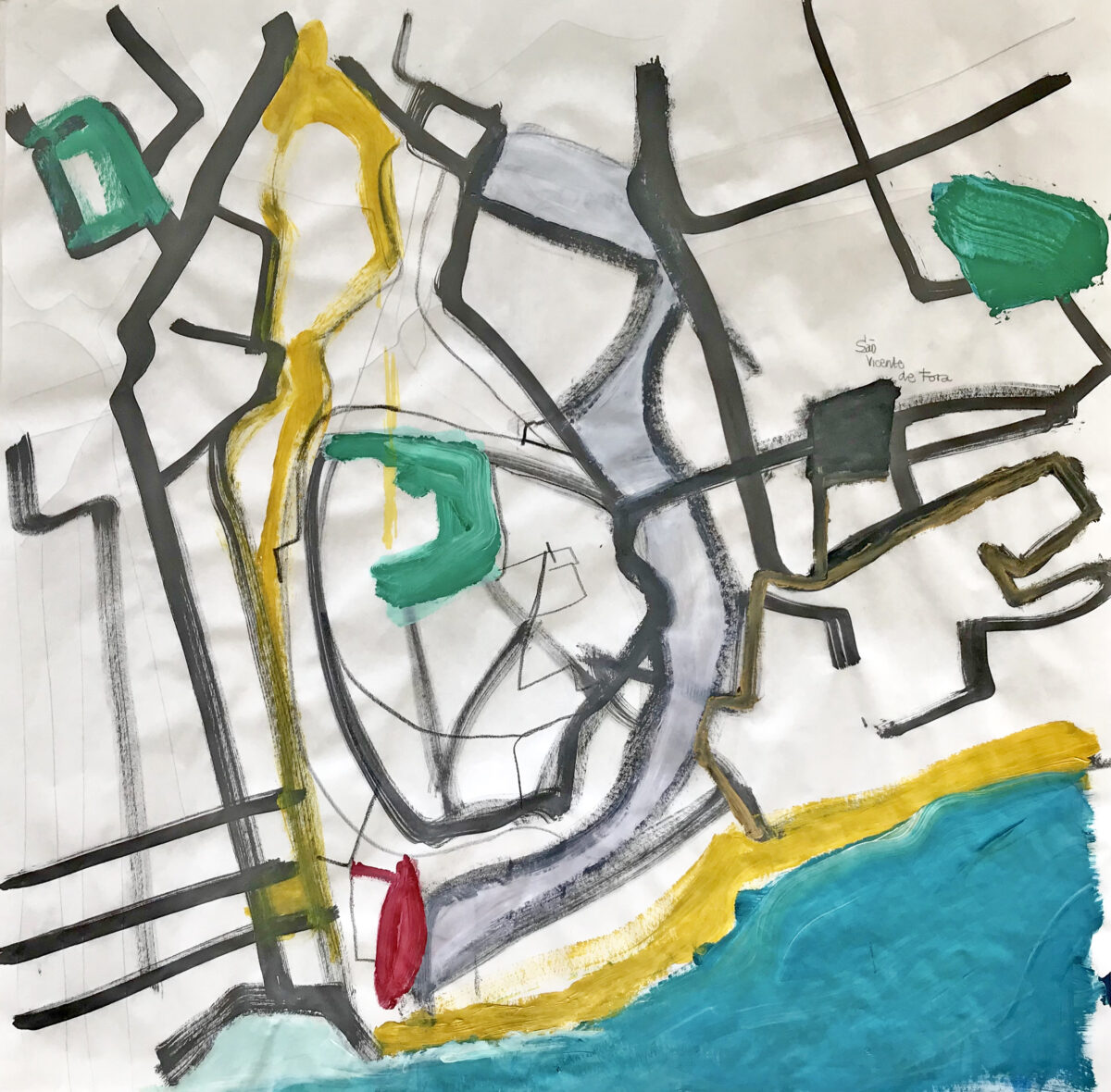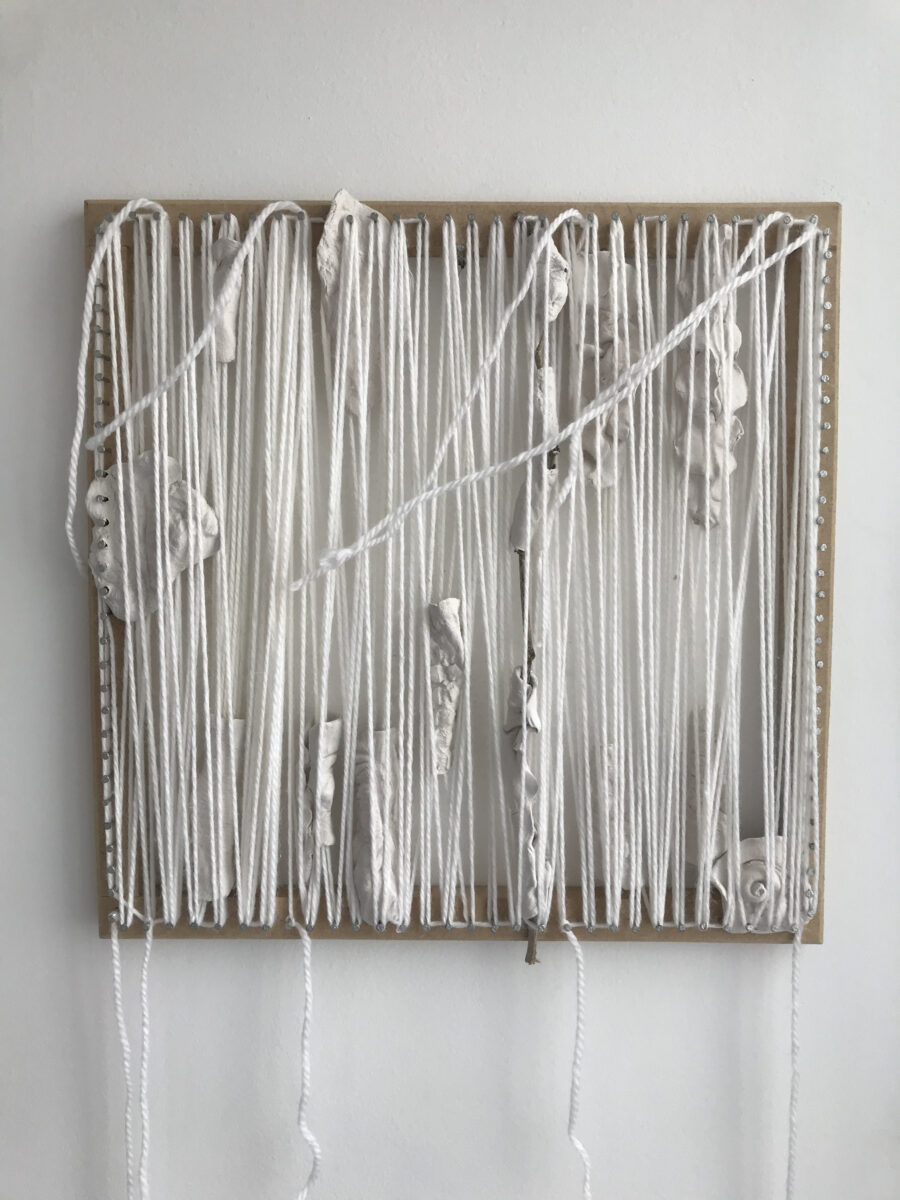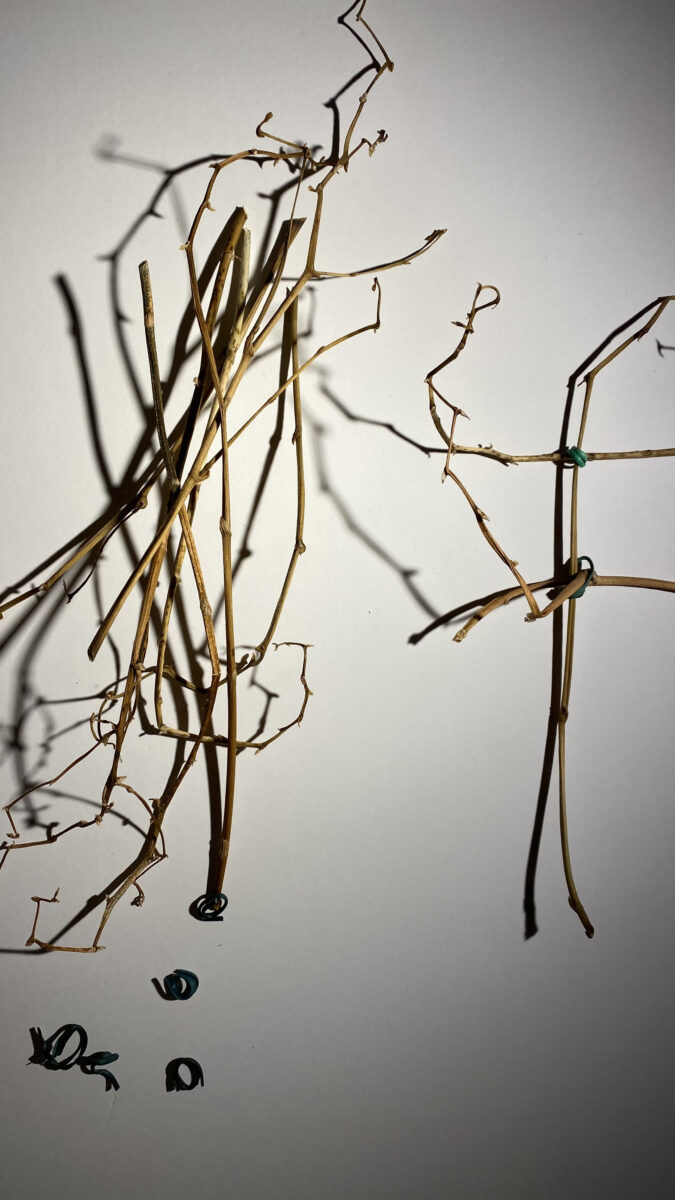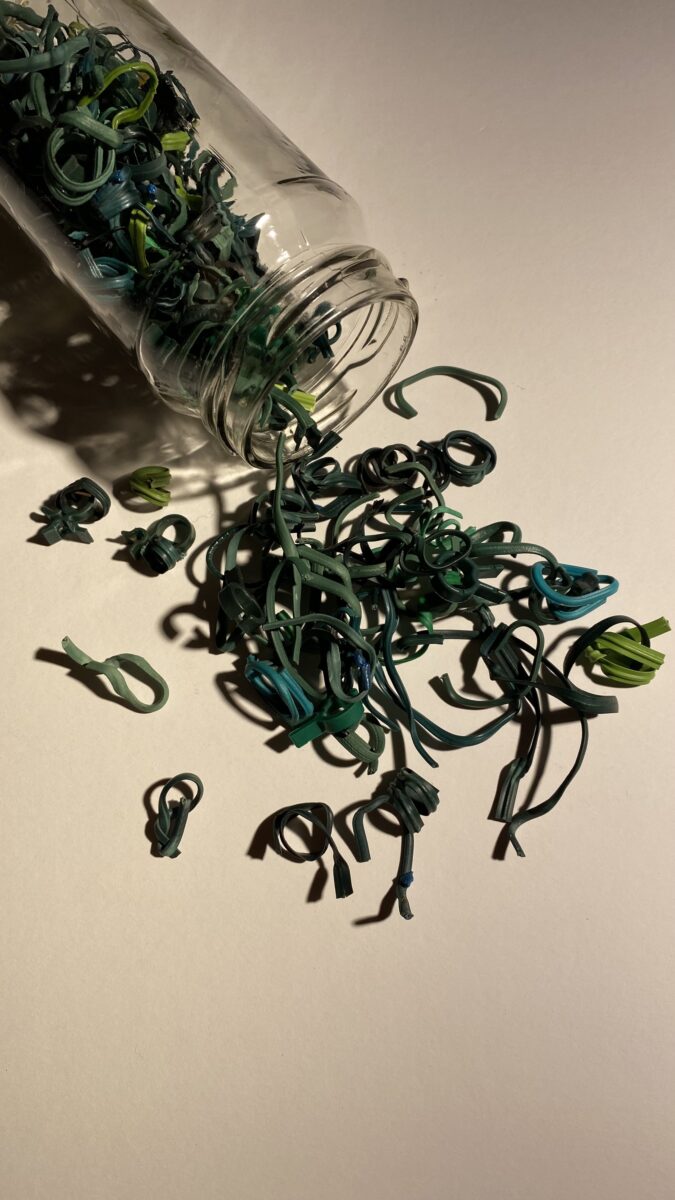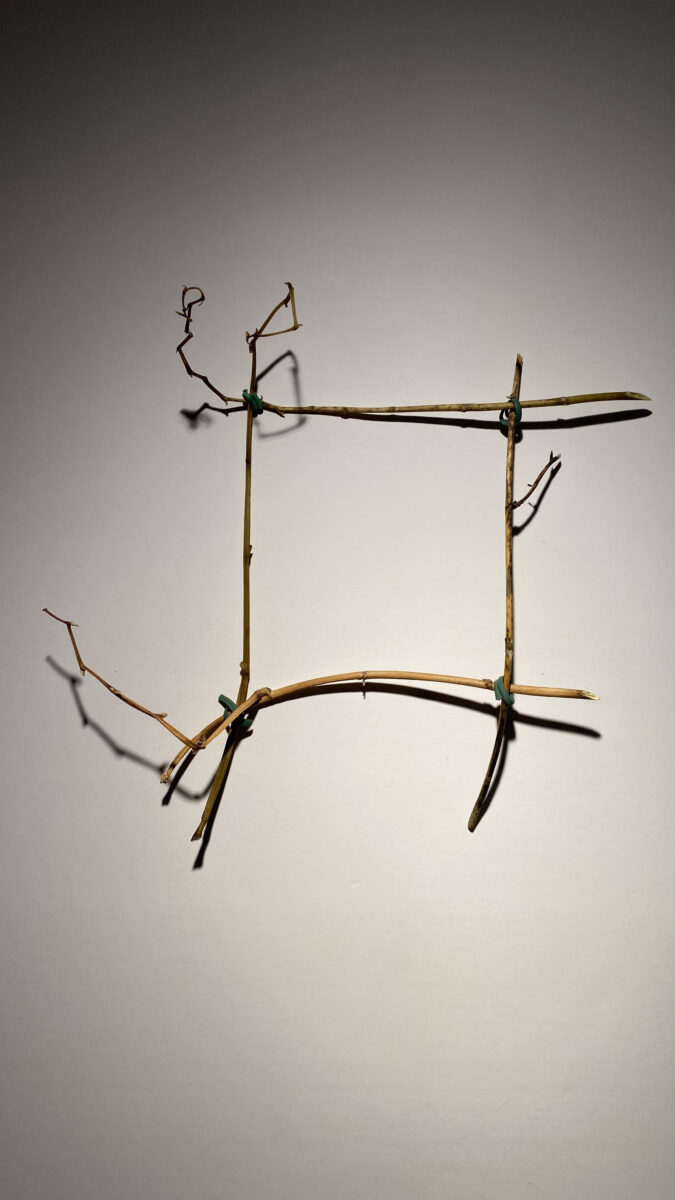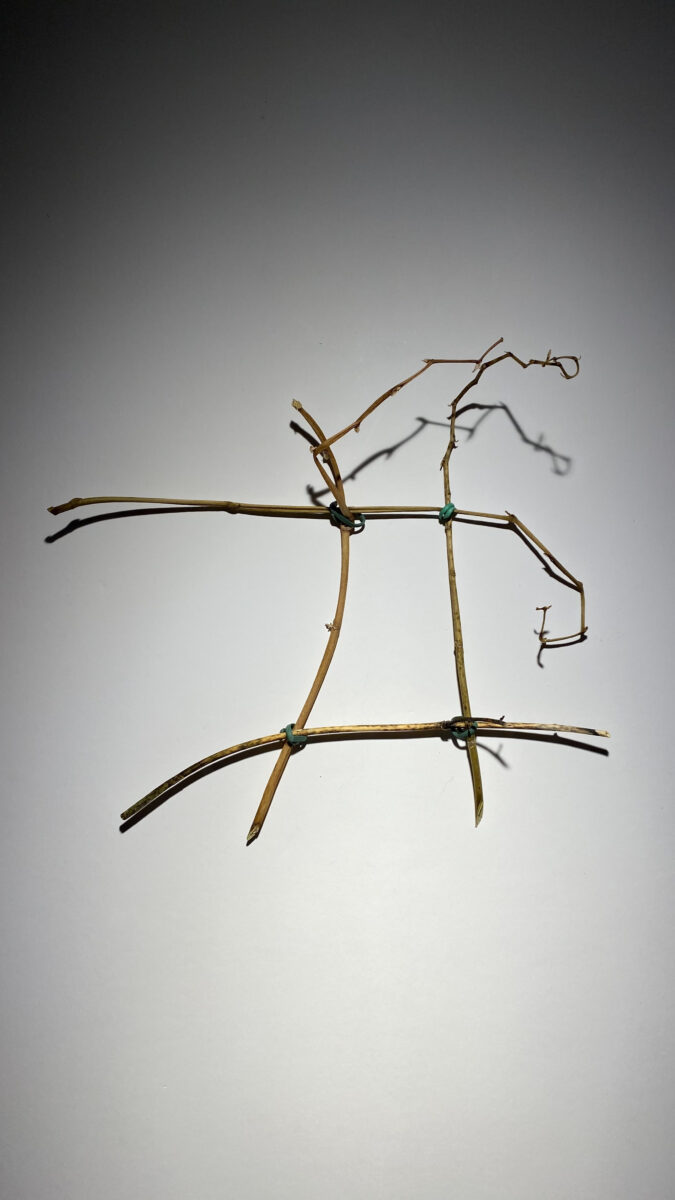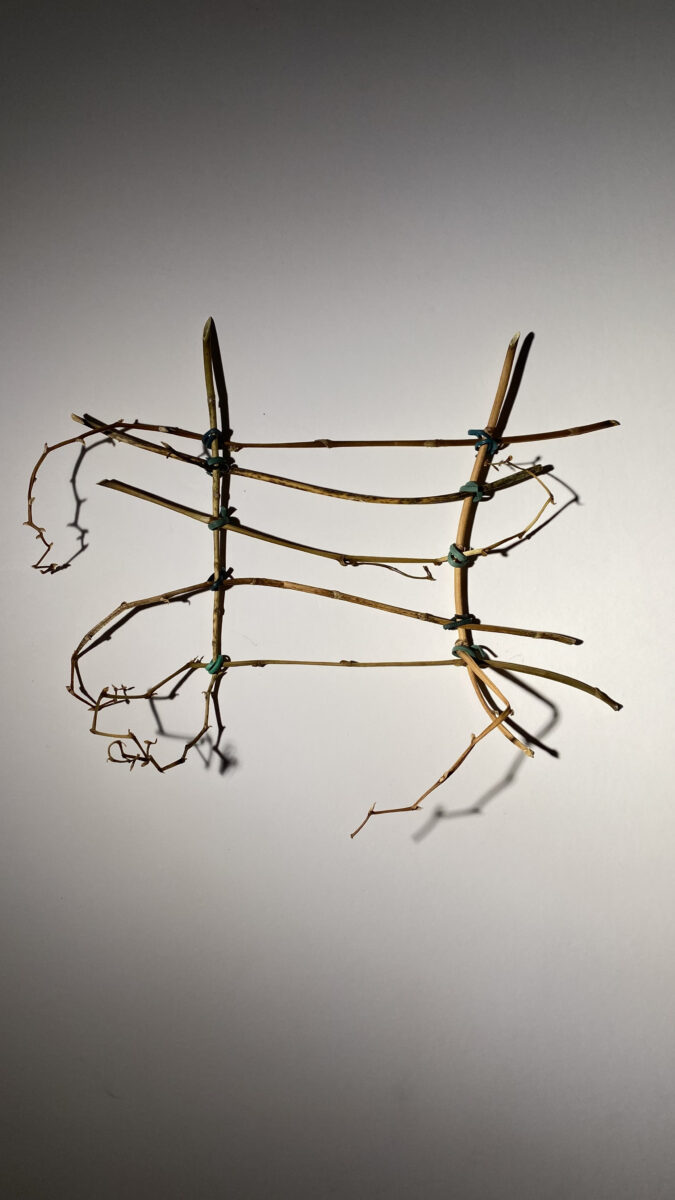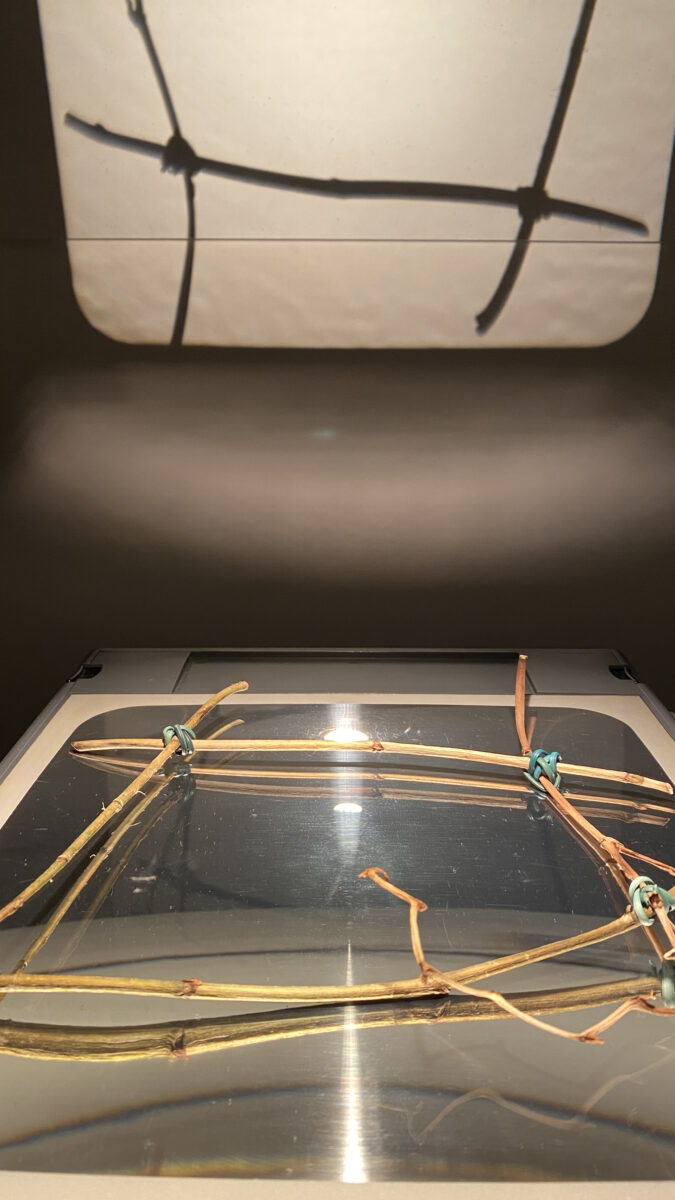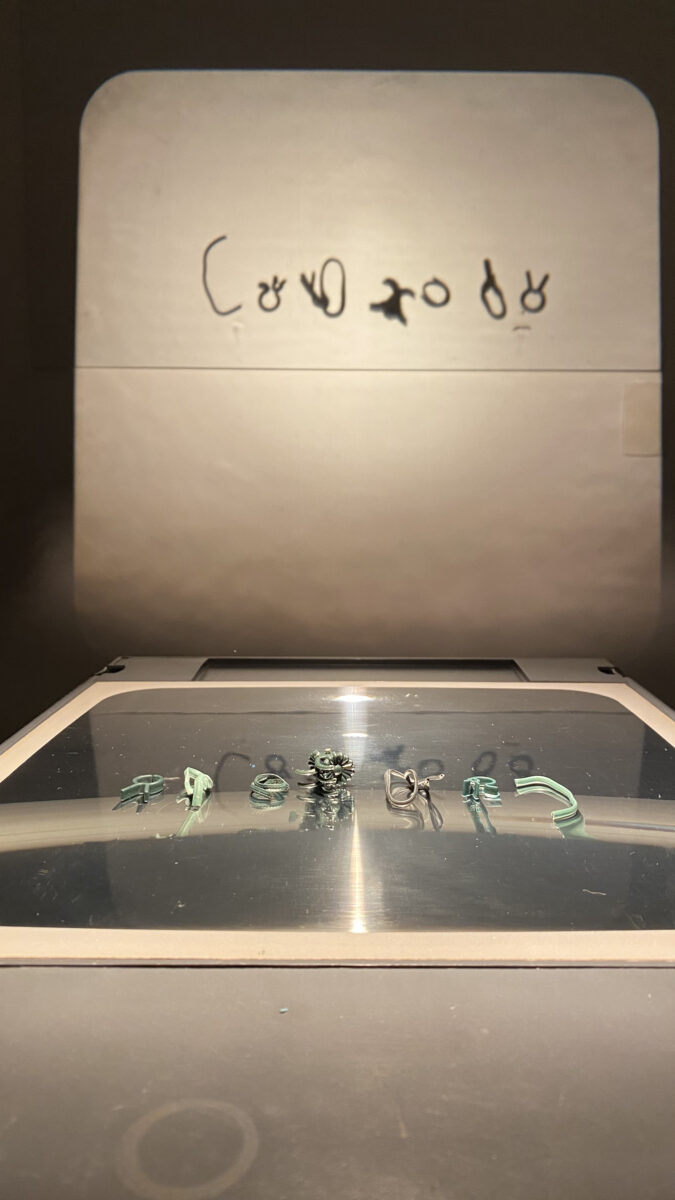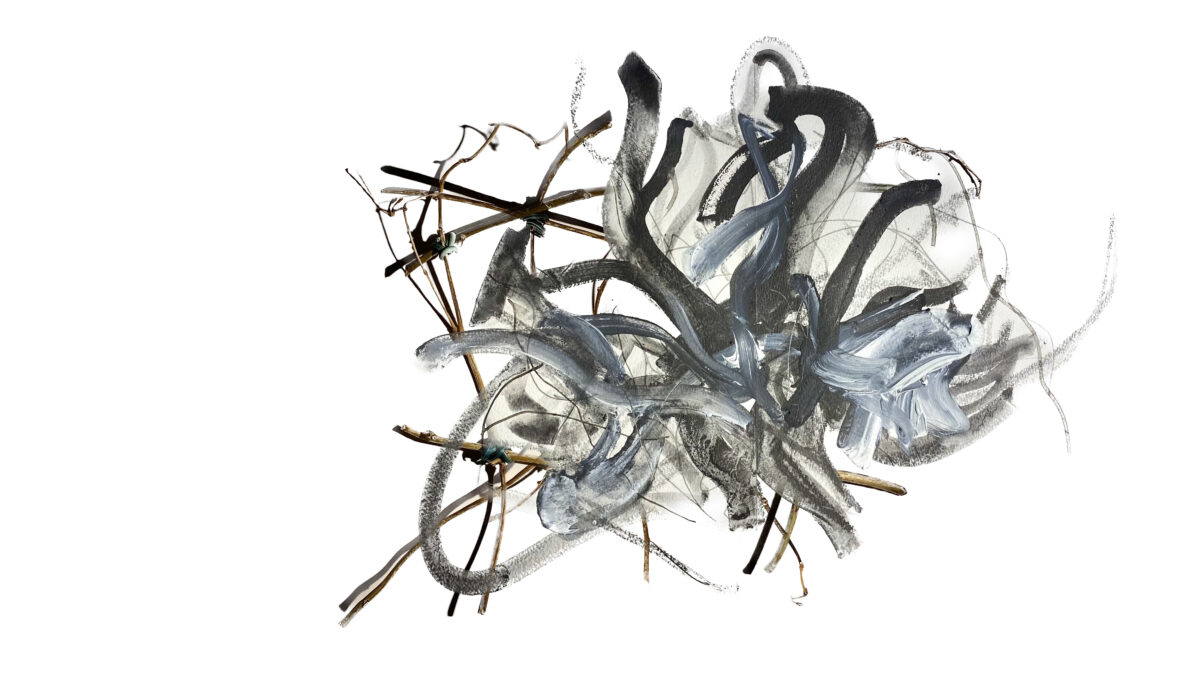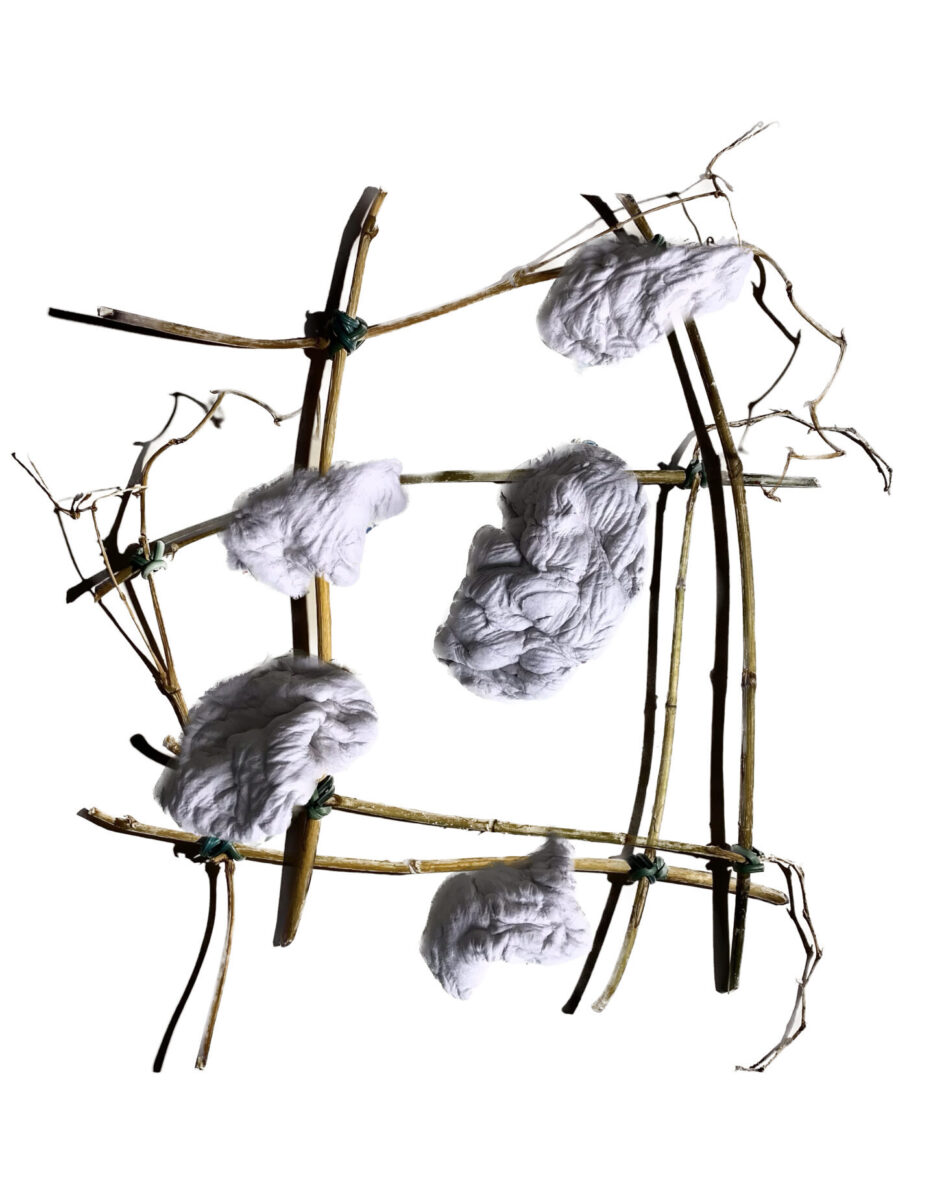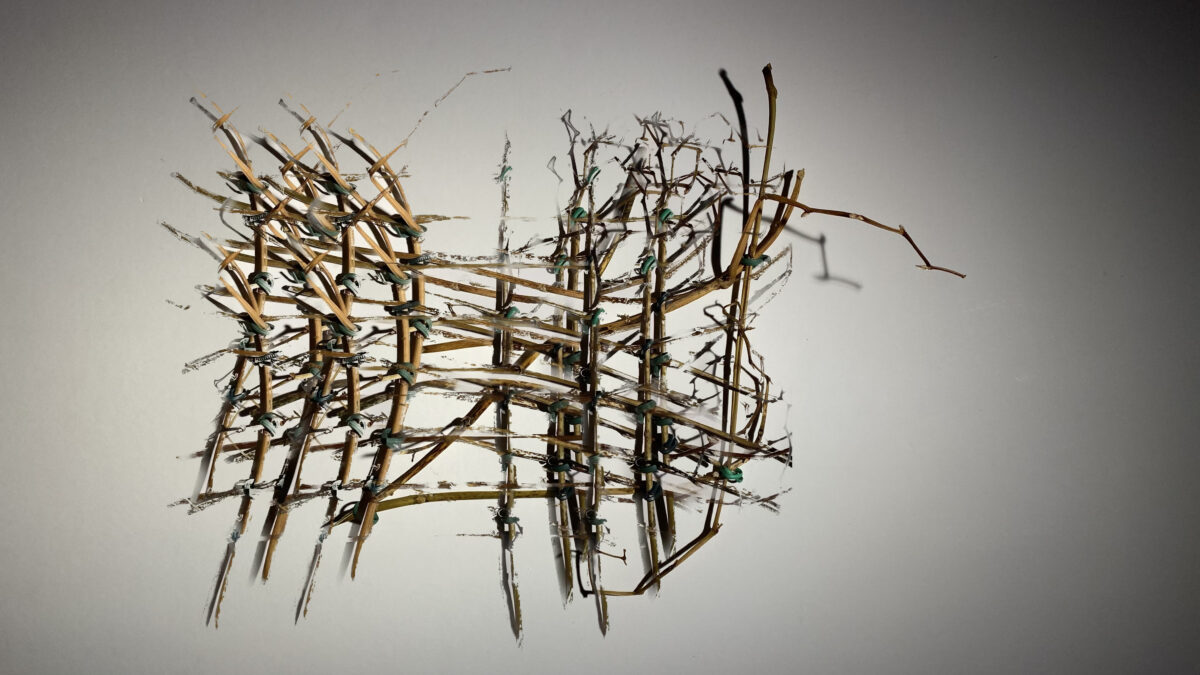STUDIES IN THE BLUE AGENCY: A COLLECTION OF THOUGHTS
Traditional Knowledge (TK) was one of the topics brought in detail by the fall 2022 O/U fourth session. I was attracted to how TK relates to the deep sea and, how ocean management and practices can become more sustainable when applying TK. Reading one of the Deep-Ocean Stewardship Initiative (DOSI) Policy Briefs, I found more about navigational maps and charts. I was particularly interested in the Marshallese objects that are constructed by navigators as instructional aids used for teaching wave patterns and the location of islands. These navigational stick charts are called Rebbilib.
At first, I related to the square-like format of the Rebbilib because it brings to my mind the grid like shape I have used in some of my artistic expressions. In them, I investigate more of memory and handcraft patterns as ancient entities of care to be preserved like TK in its holistic forms. In a series named MAPPA, I bring geography and wool yarns to the grid. In one approach, I draw walking circuits retrieved from memory to a 100cmx100cm paper (slide 001); in the other, I intertwine wool and cold porcelain in a pattern to a rug weaving loom (slide 002). Both approaches advocate for my interest in searching for some new grammar to inhabit our planet and to inspire my practice.
A further connection to the Rebbilib is the fact that it is made of sticks. That invited me the to elaborate my own navigational chart with the dry orchid sticks I have been collecting during the recent years (slide 003), while I study the socially friendly epiphyte plants. My charts are held together by the green clips that I originally remove from the live orchid itself when it arrives to me (slide 004). These clips play a symbolic role I want to free the plant from: the human desire to manipulate and interfere in the plant natural development to force it to grow in a certain direction, opposing to its own wisdom. Using these clips to hold my stick chart made me repurpose their use and also explore some new vocabulary. (slides 005 to 009)
Finally, being an online O/U participant encouraged me to explore more computer tools to combine images for the milieu I want visible, where TK / Rebbilib heritage can be part of the environment I create along with the intelligence of plants, the tradition of women handcraft, and the deep-sea knowledge yet to be learned from and protected. (slides 010 to 013)
